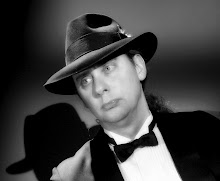I have to admit that I'm not quite enjoying this novel as much as I'd hoped, at least so far. However, I suspect that this might be due to the sporadic reading time I've had to devote to it so far. The biggest problem I've had is that Dickens keeps introducing character after character, and it's been hard for me to keep track of them all. Plus, Dickens keep shifting the story from one character to another, and their stories are rather unrelated. In the past couple of chapters, this has started to change, and we see some interrelationships between the story lines of the various characters, but for the first 200 pages or so it was difficult to see where any of this was going.
As for the characters themselves, well, no one does characters like Dickens. I don't mean he does it better than others, just different. His characters, at least many of them, are almost caricatures. Many have some weird and/or strange and/or comical trait, that Dickens magnifies and exaggerates. This makes his characters memorable, which is helpful when there's so many of them...the reader can come across a character (s)he hasn't encountered in 50 pages and then remember who they are because of their particular quirk. The characters are fun and amusing in their foibles. Indeed, I've found myself laughing out loud several times. And yet, this caricaturization (is that a word?) also makes them seem less human, and indeed more like caricatures (I'm in deperate need of a synonym here...is there one for caricature?). I can't relate to any of them in the way I could relate to Maggie Tulliver from "Mill on the Floss". I read "David Copperfield" in high school, and I'm trying to recall if the characters in that novel were like those in Bleak House. I think not, since my recollection of Copperfield is that there are some characters who may be somewhat caricature-like (Mr. Micawber), while others were more realistic (for lack of a better word).
Another interesting point about "Bleak House" is the narrator. The main narrator is Esther Summerson, who occasionally seems to cover up her own feelings or thoughts, making her not so reliable. But then other chapters are told from the perspective of an omniscient, third person narrator. I actually rather enjoy this technique...it gives the book some variety switching back and forth, and it allows Dickens to follow story lines that Esther is unaware of.
Anyway, I'm back on track, and hopefully my more regular reading schedule will allow me to get into this novel more than I have so far. I'm optimistic!!

No comments:
Post a Comment